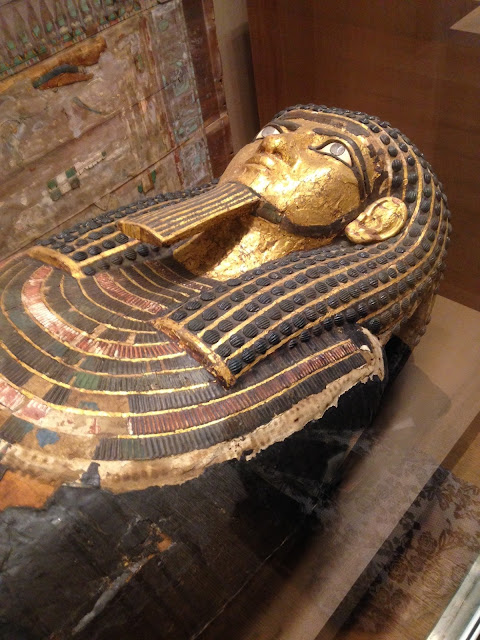Day 405 - 18th Century Brits
March 3, March 10, 2025
As I walked into gallery 628, I instantly knew that it’s devoted to English painters of the 1700s. (More accurately, it's home to works of painters who worked mostly in England, since the gallery contains works by Copley and John Trumbull.) Is it that I’ve seen some of the images before? John Hoppner’s portrait of a famous boxer of the period, fists raised in an en garde position, looks very familiar. Is it the abundance of red coats worn by the men in the portraits? Is it the pouffy powdered wigs of the women? Or is it something about the gray skies and hazy treatment of the landscapes (perfect for a damp, misty climate!), or the use of dogs and horses as accessories for men of genteel birth? It seems to me, too, that there's also a stylistic element involved: many of the pictures display loose brushwork (The introductory placard talks about Britain’s role in the global economy and the establishment of the Royal Academy, so maybe I’m on the wrong track about painting technique.)
I’m slightly abashed to say that this gallery required a second visit. The painting I was most taken with and initially opted to write about was Sir Joshua Reynolds’ portrait of Lady Smith and her children. When I got home, I discovered that this portrait was also the subject of Day 234’s entry, dating to January 2021. More than four years later, I still like the work immensely - I can be accused of faulty memory, but not inconsistency - but have nothing new to say about it. Hence, a second visit to select a different work.
That is Sir Joshua Reynolds’ 1761-1766 triple portrait of The Honorable Henry Fane, Inigo Jones, and Charles Blair. It’s a very large painting - Reynolds’ largest portrait, I learn - measuring, I would guess, 12 feet wide and 7 feet high. Was it originally commissioned to hang in a room in Fane’s home - which must have been very grand indeed - and did Inigo Jones design that home, I wonder? The three subjects are placed. in an outdoor setting (imaginary, I read), with a pond in the background shaded by leafy trees and, beyond that, what appears to be a rocky outcropping. There’s no question who the dominant figure in this triad is. The Hon stands upright in a casual pose, one leg crossed over the other, leaning on a walking stick. The other two men are seated at a table laden with wine goblets and a silver ewer; they are evidently the beneficiaries of their host’s hospitality. Lest there be any doubt in the matter, Fane wears a bright red coat over a green weskit - the only bright note in the painting, and one that certainly calls attention to itself - while the other two are clad in ivory and green. Actually, the entire palette, aside from that coat and a patch of blue sky, is muted, consisting of ivory, taupe, green, and gray. The gray-ish tones extend to the men's complexions and the obligatory greyhound that nuzzles Jones’ (or it it Blair’s) knee?
Whatever the social hierarchy implicit in the painting, it’s ironic that Inigo Jones is the only one of these personages that anyone has ever heard of today. Art and architecture leave a tangible inheritance; titles do not.




Comments
Post a Comment